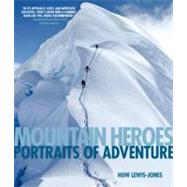
Note: Supplemental materials are not guaranteed with Rental or Used book purchases.
Purchase Benefits
What is included with this book?
The New copy of this book will include any supplemental materials advertised. Please check the title of the book to determine if it should include any access cards, study guides, lab manuals, CDs, etc.
The Used, Rental and eBook copies of this book are not guaranteed to include any supplemental materials. Typically, only the book itself is included. This is true even if the title states it includes any access cards, study guides, lab manuals, CDs, etc.
Daunting rock pinnacles, knife-edged arêtes, cascading glaciers, and explosive avalanches of blinding snow – and a team of grim-faced climbers risking everything in their arduous upward press to bag another summit – this is perhaps the conventional image conjured up by the wordmountains. It is a vignette that might recall upper sections of the Alps, the Andes, or the Himalaya. But these lofty regions represent only a small fraction of our total mountain terrain. Sadly, images of the heroic age are now too often supplanted by the reality of warfare in the mountains, abused natural resources, impoverishment of mountain peoples, and the environmental and economic disruption caused by climate change.
Mountains are found on every continent, from the equator to as close to the poles as land exists. As a single great ecosystem, they encompass the most extensive known array of landforms, climates, flora, and fauna, as well as human cultures. From a geological point of view they comprise the most complex and dynamic of the Earth’s underlying structures that are still in the process of formation as the numerous volcanoes and frequent earthquakes testify.
No surprise then, that it is hard to limit the mountains to simple definition. Ask the people of northern England and Wales – perhaps shepherds at high pasture in the Lake District, or farmers at work in the shadow of Snowdonia’s imposing crags – and they would all affirm that they live among mountains, yet altitudes here barely exceed a thousand metres. Peasants of southern Peru or Tibetan nomads likewise would be classed as mountain people; their local surroundings exceed 4,000 meters and yet may be as flat as the prairies of central Canada. The well known German mountain geographer of the twentieth century, Carl Troll, described the highest parts of equatorial Indonesia, for example, as ‘high mountains without a high-mountain landscape’ – unlike the remote, challenging, conventionally ‘mountainous’Hochgebirgeof popular imagination. It’s clear that the diversity of the mountain world defies easy categorization.